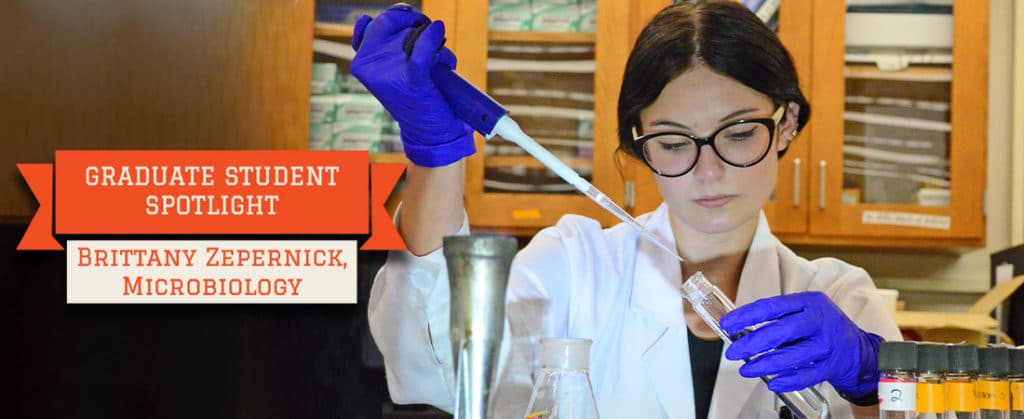Growing up in Cleveland, Ohio, Brittany Zepernick was captivated by the tapestry of underwater seascapes that exist in exotic tropical oceans. Visions of colorful coral reefs and tropical fish originally peaked her interest in aquatic ecosystems. As she got older, however, it was a drinking water crisis that ultimately focused her interests on the freshwater systems in her own backyard.
In 2014, approximately 400,000 people in Toledo, Ohio were left without safe drinking water. The cause was microcystin, a toxin formed by algae blooms. Zepernick was a freshman at Bowling Green State University at the time, and this pivotal event placed her on the path to studying freshwater organisms when she became fascinated with the organisms responsible for making the drinking water toxic.
The water crisis reminded Zepernick of memories from her childhood, when water quality would occasionally impact her family’s plans. “Growing up, my family would spend summer afternoons swimming in Lake Erie,” Zepernick said. “I remember my parents checking the news for the bacteria report. If the bacteria counts were too high, it wasn’t safe to swim.”
When the water crisis hit in 2014, Zepernick wondered if there was a connection between the bacteria from her childhood memories and the unsafe drinking water. To answer this question, she enrolled in a limnology course where she learned about the dense toxic blooms in Lake Erie that were responsible for poisoning the water supply for thousands of people. It was this college course that led Zepernick to shift her interest from saltwater coral reefs to freshwater algal blooms.
After graduating with a bachelor’s degree in biology, Zepernick began the search for graduate research programs, which led her to Steven Wilhelm’s Aquatic Microbial Ecology Research Group. Zepernick’s research focuses on harmful algal blooms (HABs), which are masses of phytoplankton, or microscopic algae, that experience unregulated growth. These blooms negatively impact freshwater habitat, with detrimental effects on the ecology and economy of the surrounding areas.
Zepernick’s career has come full circle as she is now researching Microsystis aeruginosa, which is the organism that caused the water crisis in 2014. This HAB species has been negatively impacting water quality, not only in Lake Erie but in freshwater systems around the globe, for decades by producing the toxin that rendered the drinking water unsafe in 2014.
Another focus of Zepernick’s research is a freshwater diatom, or single-celled algae, that causes winter algal blooms in Lake Erie. The large size and biomass of these blooms results in dangerously low oxygen levels (hypoxia) in the water column. Hypoxia makes the water inhabitable by other aquatic life such as fish and invertebrates.
Zepernick hopes her research will not only contribute to a better understanding of HABs, but also to increased knowledge of water quality and microbiology communities in general. “As climate change and anthropogenic pollution increase, freshwater resources are becoming increasingly at risk,” Zepernick said. “This research will contribute to the integrity of present and future global freshwater resources.”
